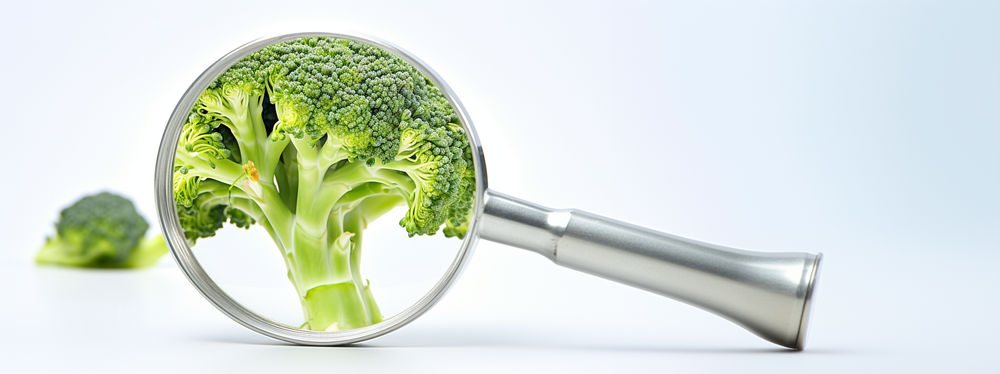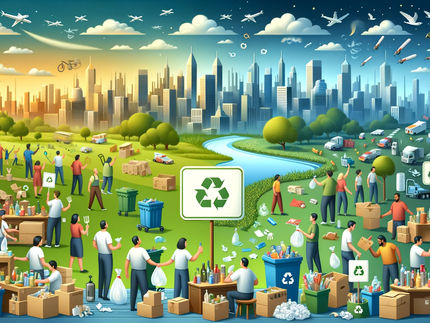Ensuring that packaging does not harm food
TÜV NORD Indonesia tests food packaging for harmful substances in its laboratory
Advertisement
Europe and North America are currently putting the brakes on packaging for fresh food: On one hand, for sustainability reasons, the trend is clearly moving towards unpackaged fruit and vegetables. On the other, the market for ready-to-eat convenience products is growing, which is leading to more packaging. In other regions of the world, packaging is preferred, especially for fresh food, as it is considered more hygienic. What’s more, the beverage industry increasingly needs packaging made of plastics, aluminium and composite products. But what if the products are protected from the environment by the packaging, but the packaging itself is a problem? This is where the food laboratory of TÜV NORD Indonesia comes into play.
Packaging market growing
The global market for food packaging is growing rapidly and will continue to do so. It is currently estimated to be worth over 500 billion US dollars, with annual growth rates of six percent predicted. This trend is also evident in Indonesia, with similar growth rates.
Indonesia faces major challenges: Plastic packaging is hardly recycled at all, as the circular economy is still in its infancy. As a result, plastics often end up in the environment. Environmentally friendly packaging often still needs to be developed, and its high price is generally a major obstacle to its use on an industrial scale.
Growth in the packaging industry is driven by rising demand for ready meals and beverages, as well as stricter food safety and hygiene requirements. Packaging not only protects food, but also plays an important role in extending shelf life. At the same time, growing consumer demand for recyclable and environmentally friendly materials is driving innovation in sustainable packaging. The question, however, is: Are the newly developed packaging materials safe?
The list of harmful substances is long
Heavy metals such as lead, cadmium and mercury, plasticisers, mineral oil hydrocarbons, solvent residues: The list of substances that may be present in food packaging is long, and these substances can be harmful to health, carcinogenic or even lead to genetic changes.
Lead and mercury can impair the nervous system, lead, mineral oil hydrocarbons, solvent residues and cadmium can damage the kidneys, mineral oil hydrocarbons and solvent residues can be carcinogenic, and plasticisers can cause hormonal disorders and affect reproduction. This makes it clear that analyses of packaging are very important from a consumer perspective.
Packaging manufacturers and the food industry have also recognised this and are having their packaging analysed in laboratories. “We analyse packaging made of paper, cardboard and plastics,” explains Dila Augustina, responsible for business and product development at TÜV NORD Indonesia. TÜV NORD has been operating a food laboratory in Jakarta since 2012, and last year the laboratory’s capacities were expanded to include packaging tests, among other things. The laboratory tests packaging for all food and luxury foods, with the exception of extruded products such as crisps or breakfast cereals, which are pressed into shape under high pressure and must be specially protected from light or physical damage. “In general, we test according to Indonesian and European standards for the Indonesian and European markets,” explains Dila Augustina.
Environmental friendliness is another aspect
However, food safety is not the only important criterion; the sustainability and environmental friendliness of products are also a focus: “Consumers and governments in Europe and North America are demanding the use of recyclable or biodegradable materials for environmental reasons,” explains Dila Augustina, adding: “Plastic and paper packaging can be described as sustainable if it is designed to conserve resources and generate less waste.” For plastics, this means using recycled materials or only one type of plastic to simplify recycling. In addition, no further chemicals are added. Some plastics are also made from plants (bioplastics), which are sustainable per se.
“Paper packaging, on the other hand, is sustainable if it comes from responsibly managed forests or if it is made from recycled paper,” explains Dila Augustina. Care is taken to ensure that there are no heavy plastic coatings, no glossy laminates or too much printing ink, as these make recycling difficult. Instead, water-based or natural coatings can be used. Since paper is easy to recycle and can even be composted, it is often a good choice when produced and processed in the right way.
The Indonesian Agency for the Monitoring of Medicines and Food (BPOM) stipulates that certain ingredients must be checked and quantified in paper and cardboard packaging. These include mercury, lead, cadmium and hexavalent chromium, as well as formaldehyde, phthalic acid esters and pentachlorophenol.However, the use of food packaging materials from recycled sources may still raise safety concerns when they come into direct contact with food. Therefore, the quality and safety of such packaging materials must continue to be carefully evaluated. Who knows what the recycled material was used before?
This is important to know because recycled materials tend to have higher metal contamination than virgin materials due printing inks and additives during the recycling process, as Dila Augustina explains. Therefore, the customer must specify whether or not the material is recycled.
This is precisely what is tested under EU regulations: Materials that come into contact with food must not transfer any components that could endanger human health. It is clear that they must not have a negative impact on the food itself. Manufacturing processes and the composition of the materials themselves are also taken into account. The Indonesian standard used by specialists in the laboratory primarily refers to microbiological and physical tests, chemical analyses and sensory tests.
Specific tests include testing for heavy metals such as mercury, lead, cadmium and hexavalent chromium. These elements must not be released into the environment, as excessive concentrations can pose a risk to both health and the environment. The concentration of formaldehyde, phthalates and pentachlorophenol must be strictly monitored to ensure compliance with limit values. In order to test how the material behaves at the end of its life cycle and whether it can be safely decomposed without leaving harmful residues, biodegradability and compostability must also be tested. Ultimately, it is not only the material that makes packaging sustainable, but also how it is manufactured, used and disposed of after use. Considering the entire life cycle – from raw materials to production to disposal – helps to ensure that the packaging protects the product while also protecting the environment.
The food and packaging industry therefore faces major challenges: Firstly, food must be protected from environmental influences; secondly, the packaging must not contaminate the food itself; and thirdly, recyclable or recycled products must be used for the packaging. Dila Augustina: “At TÜV NORD Indonesia, we help companies to make their packaging safe and strengthen consumer confidence in their products with our tests and inspections.”
Other news from the department business & finance
Most read news
More news from our other portals
See the theme worlds for related content
Topic world Food safety
Food safety is at the heart of the food and beverage industry. It ensures that the food we eat every day is not only nutritious, but also free of harmful contaminants. From field to plate, the industry monitors and regulates every step of the process with strict quality controls, advanced testing methods and continuous research.

Topic world Food safety
Food safety is at the heart of the food and beverage industry. It ensures that the food we eat every day is not only nutritious, but also free of harmful contaminants. From field to plate, the industry monitors and regulates every step of the process with strict quality controls, advanced testing methods and continuous research.




























































